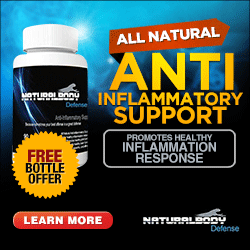Olive Leaf Benefits
Oleuropein in Olive Plants and its Pharmacological Effects
By SensiblyShop.com
Abstract
Olive from Olea europaea is native to the Mediterranean region and, both the oil and the fruit are some of the main components of the Mediterranean diet. The main active constituents of olive oil include oleic acid, phenolic constituents, and squalene.
This review focuses on recent works that have analyzed the relationship between the major phenolic compound oleuropein and its pharmacological activities including antioxidant, anti-inflammatory, anti-atherogenic, anti-cancer activities, antimicrobial activity, antiviral activity, hypolipidemic and hypoglycemic effect.
Introduction
The pharmacological properties of olive oil, the olive fruit and its leaves have been recognized as important components of medicine and a healthy diet because of their phenolic content. Oleuropein is generally the most prominent phenolic compound in olive cultivars and can reach concentrations of up to 140 mg g−1 on a dry matter basis in young olives and 60–90 mg g−1 of dry matter in the leaves.
Oleuropein doesn’t only occurs in the Olea genus, but also occurs in many other genera belonging to the Oleaceae family and has been previously described in Fraxinus excelsior, F. angustifolia, F. chinensis, Syringa josikaea, S. vulgaris, Philyrea latifolia, Ligustrum ovalifolium, L. vulgare, and many others.
Oleuropein is very abundant in the early stages: in young fruits, it can reach 14% of dry matter. Although lower, its level is still very important at harvest for green picked cultivars.
Oleuropein and General Health
Oleuropein has several pharmacological properties, including antioxidant, anti-inflammatory, anti-atherogenic, anti-cancer, antimicrobial, and antiviral. For these reasons, it is available commercially as a food supplement in Mediterranean countries and all over the world. In addition, oleuropein has been shown to be cardioprotective against acute adriamycin cardiotoxicity and has been shown to exhibit anti-ischemic and hypolipidemic activities.
As an Antioxidant and Anti-inflammatory
Oleuropein has both the ability to scavenge nitric oxide and to cause an increase in the inducible nitric oxide synthase (iNOS) expression in the cell. Researchers witnessed the scavenging effect of oleuropein demonstrated with respect to hypochlorous acid (HOCl). HOCl is an oxidative substance produced in vivo by neutrophil myeloperoxidase at the site of inflammation and can cause damage to proteins including enzymes. Oleuropein neutralized the oxidative activity. Oleuropein elicits anti-inflammatory effects by inhibiting lypoxygenase activity and the production of leukotriene.
Additionally, plethora of minor constituents in olive oil have been identified as effective agents in mitigating the initiation, promotion, and progression of multistage carcinogenesis.
Antimicrobial, Antiviral and Antifungal Benefits
Oleuropein has been shown to have strong antimicrobial activity against both Gram-negative and Gram-positive bacteria as well as mycoplasma. Phenolic structures like oleuropein seem to produce its antibacterial effect by damaging the bacterial membrane and/or disrupting cell peptidoglycans.
In a U.S. patent, it has been claimed that oleuropein has potent antiviral activities against herpes mononucleosis, hepatitis virus, rotavirus, bovine rhinovirus, canine parvovirus, and feline leukemia virus Studies have also shown that oleuropein exhibits a significant antiviral activity against respiratory syncytial virus and para-influenza type 3 virus.
Neuroprotective Activity
Studies have pointed out the positive impact of natural extracted polyphenols on the incidence of age-related disorders, such as dementia. It has been reported that oleuropein decreases or even prevents Aβ aggregation, which is inherent to Alzheimer’s disease.
Why Wait?
Why wait for a bad report from a physician when you can start taking a NON-GMO, organic and healthy supplement. Olive leaf extract is all natural and ready to work in your favor.
